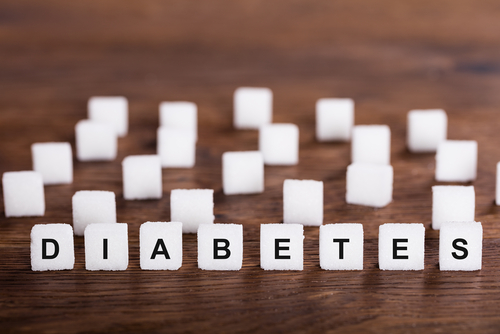#ECFS2018 – Orkambi Taken for 1 Year Returned Glucose Levels to Normal in Group of CF Patients in Study

One year of treatment with Orkambi (lumacaftor/ivacaftor) returned blood glucose (sugar) levels to normal in almost half of a small group of diabetic or glucose-intolerant cystic fibrosis (CF) patients, a study reports.
These results were summarized in the presentation “Observational study of glucose tolerance abnormalities in patients with cystic fibrosis homozygous for Phe508del CFTR treated by lumacaftor-ivacaftor,” given at the 41st European Cystic Fibrosis Society (ECFS) Conference that recently concluded in Belgrade, Serbia.
CF patients may show abnormal blood glucose levels due to poor secretion of insulin, the pancreas-secreted hormone that controls the levels of glucose in the blood to prevent it from getting too high (hyperglycemia) or too low (hypoglycemia).
Orkambi, Vertex’s CFTR modulator, improves lung function in CF, but little data exists as to the impact of CFTR modulators on glucose intolerance, a condition characterized by higher-than-usual glucose levels and considered a step in the development of type 2 diabetes.
Researchers tested the therapy’s effect on glucose intolerance. They recruited CF patients with a F508del mutation in the CFTR gene, and diagnosed with glucose intolerance or diabetes, who underwent a one-year treatment with Orkambi.
After that year, researchers evaluated patients’ pulmonary function, and their nutritional and metabolic status using the glucose tolerance test (GTT), used to help diagnose diabetes.
In total, data from 24 CF patients were analyzed. The majority (75%) had glucose intolerance; the others (25%) had diabetes.
Post-treatment results showed that 46% of the patients (11 out of 24) had normal glucose levels, 37% (9 out of 24) remained glucose intolerant, and 17% (4 patients) remained diabetic.
Glucose levels in the blood showed a significant drop on average, from 181 mg/dL to 151 mg/dL.
Patients’ body mass index (a measure of body fat), respiratory parameters, and continuous glucose monitoring – evaluated throughout the day using a small device – showed no differences.
Treatment with Orkambi also resulted in a significant decrease in the need for intravenous antibiotic treatment, the study reports.
Overall, “our results suggest a beneficial impact of Lumacafor-Ivacafor treatment on glucose tolerance in cystic fibrosis,” the researchers wrote. “Controlled studies with more patients are needed to confirm these results.”







